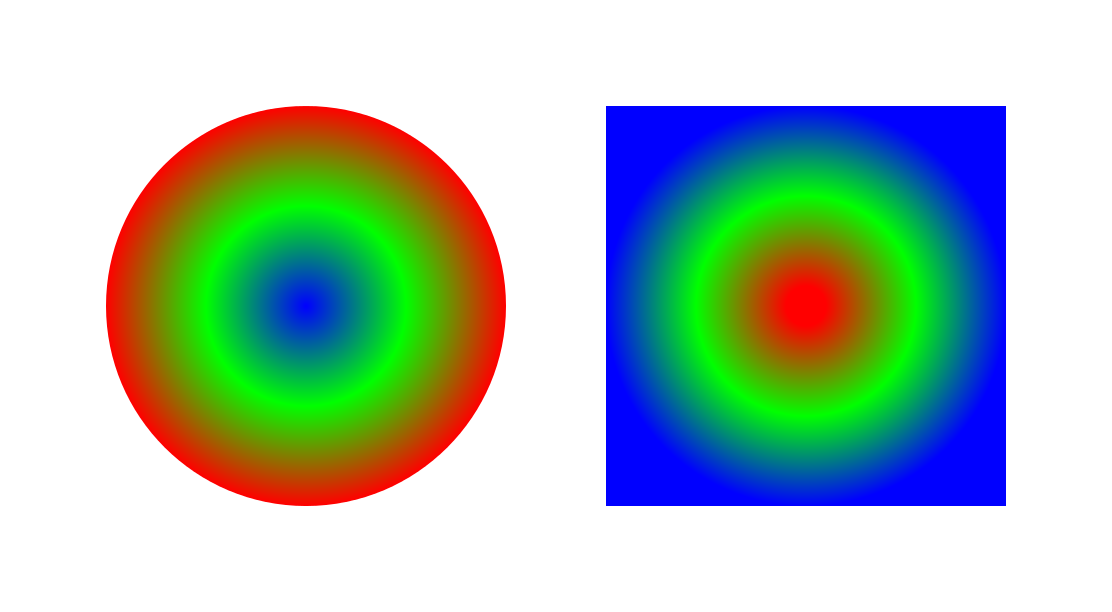|
superclass: object% |
A radial gradient is used with a brush% to fill
areas with smooth color transitions.
Color transitions are based on two circles and the sequence of
circles that “morph” from the starting circle to the ending
circle. Normally, one of the two circles defining a gradient is
nested within the other; in that case, points within the inner circle
get the same color as the inner circle’s edge, while points outside
the outer circle get the same color as the outer circle’s edge.
constructor
(new radial-gradient% [x0 x0] [y0 y0] [r0 r0] [x1 x1] [y1 y1] [r1 r1] [stops stops]) → (is-a?/c radial-gradient%) x0 : real? y0 : real? r0 : real? x1 : real? y1 : real? r1 : real? stops : (listof (list/c (real-in 0 1) (is-a?/c color%)))
Creates a radial gradient with the starting circle as the one with
radius r0 centered at (x0, y0) and the
ending circle as the one with radius r1 centered at
(x1, y1). The stops list assigns colors to
circles, where 0.0 corresponds to the starting circle,
1.0 corresponds to the ending circle, and numbers in between
correspond to circles in between.
The order of elements within stops and duplicate points are treated in the same way for as linear-gradient%.
Examples: | |||||||||||||||||||||||||||||||||||||||||||||||
|
Returns the gradient’s boundary circles as x0, y0,
r0, x1, y1, and r1.
Returns the gradient’s list of color stops.
